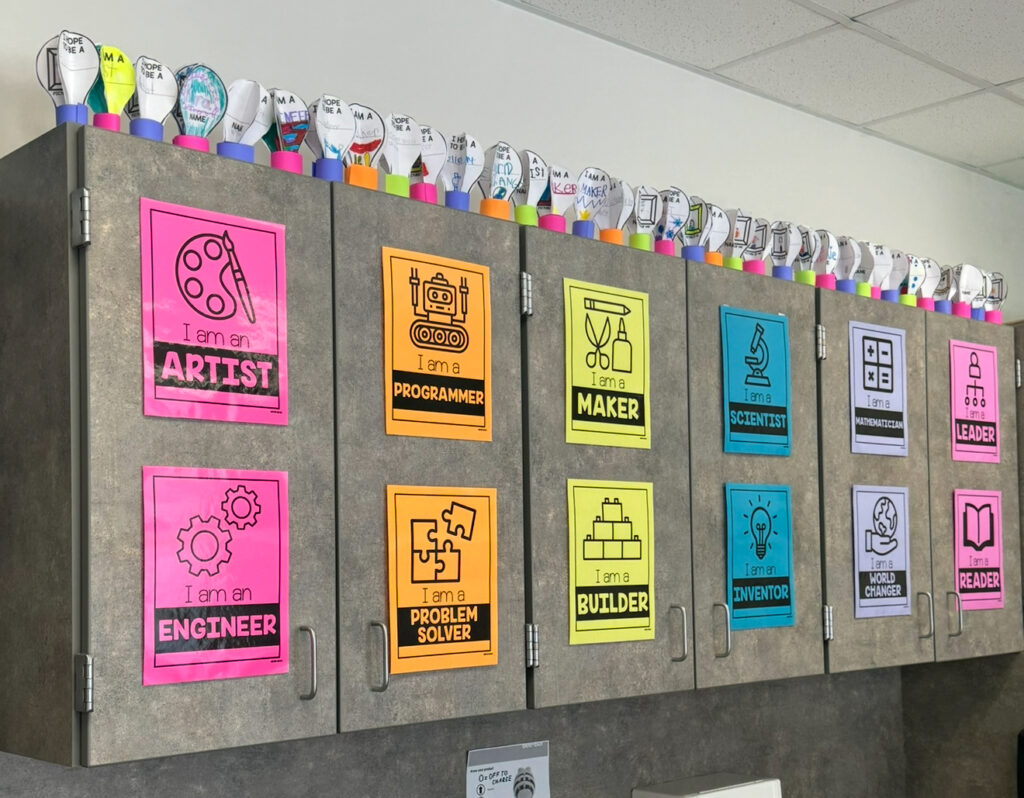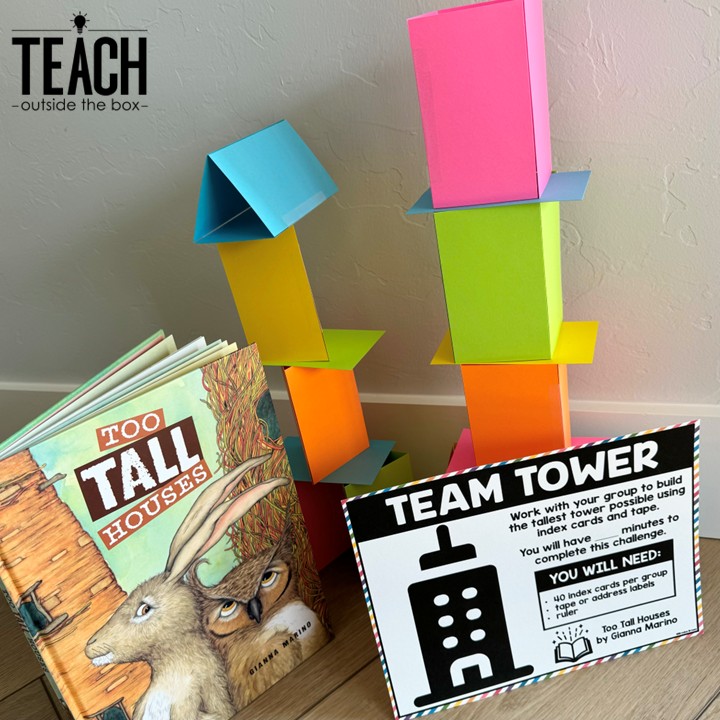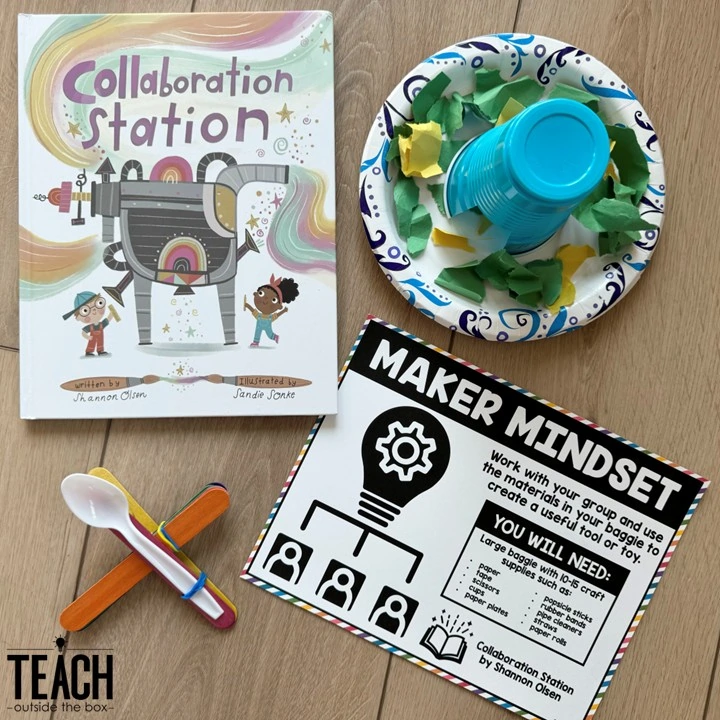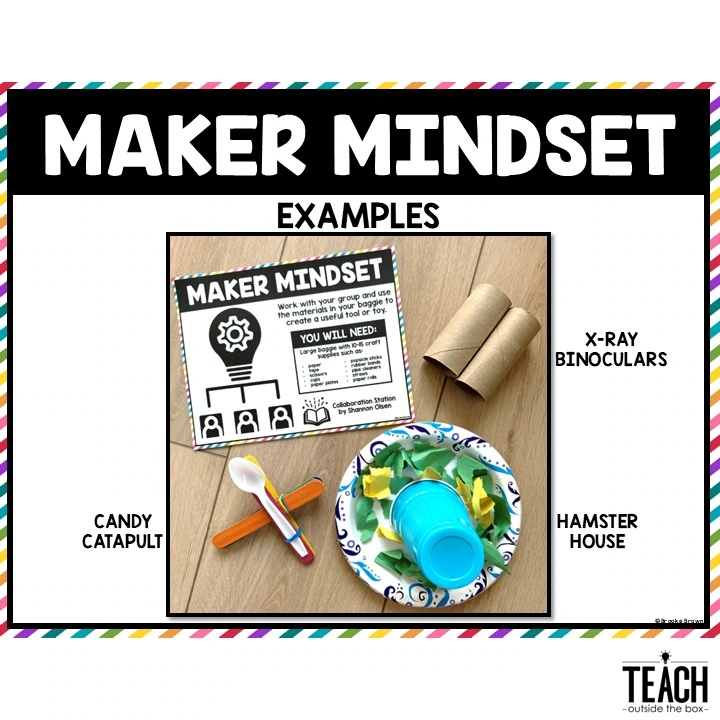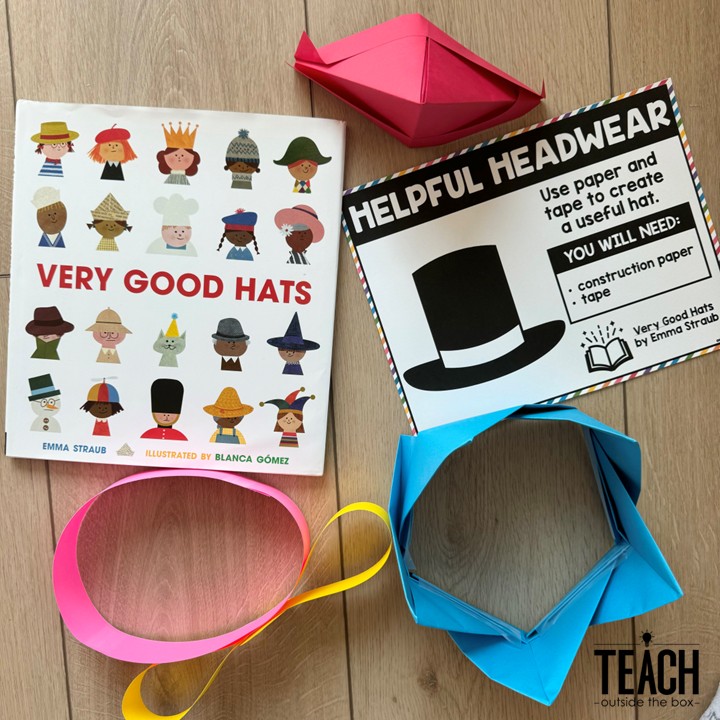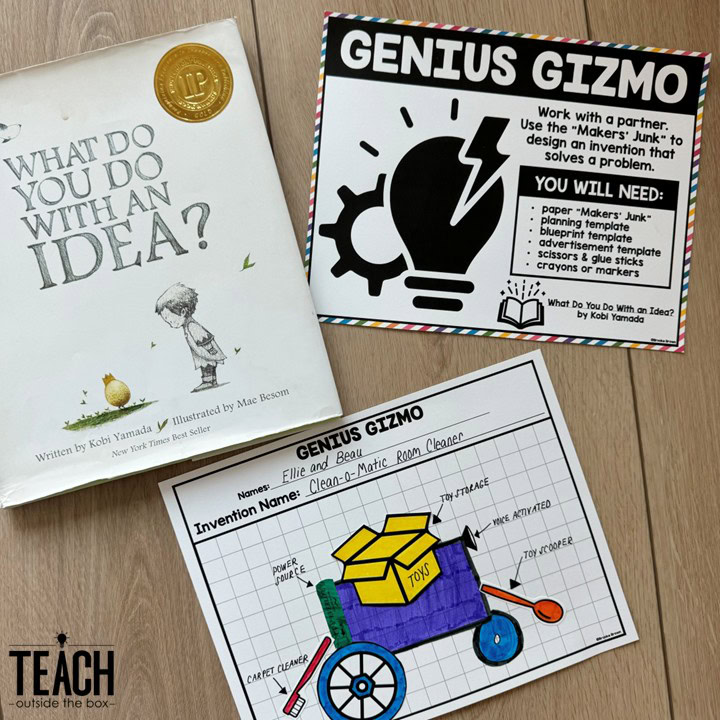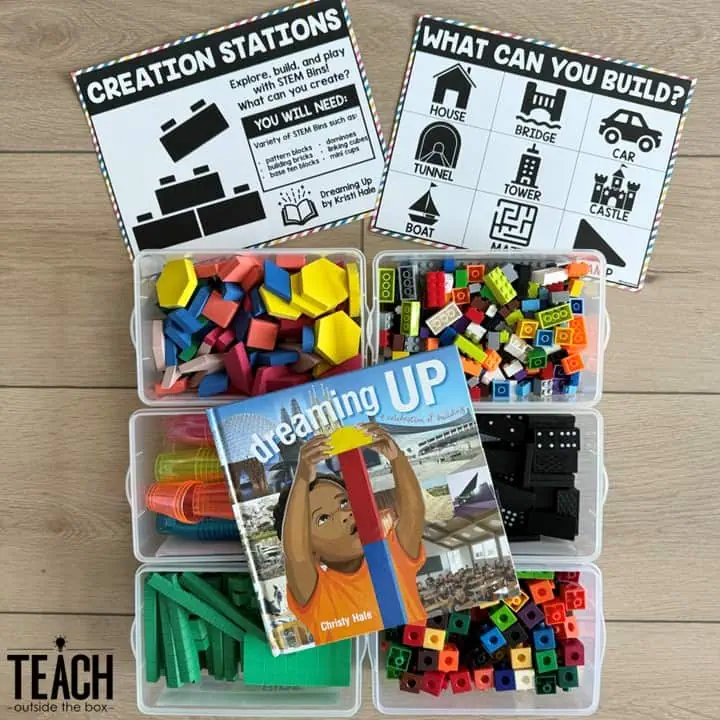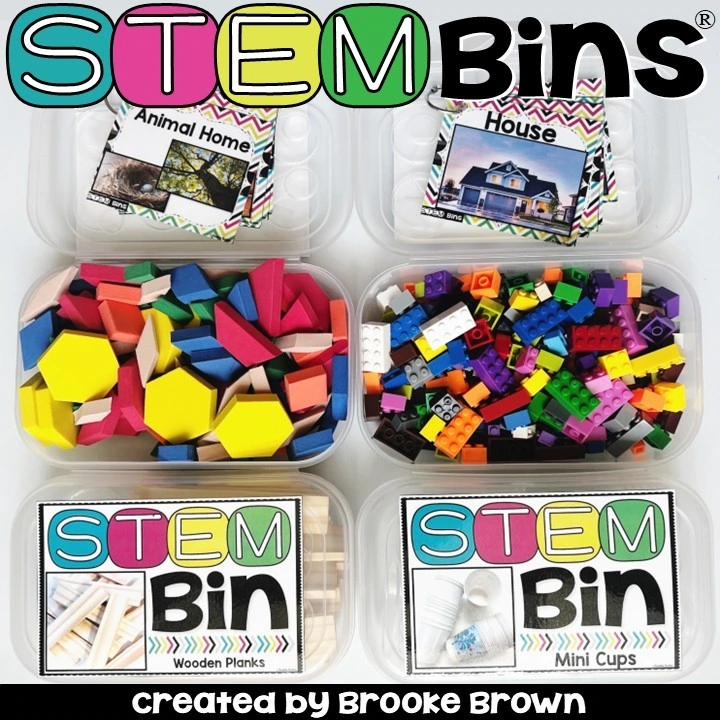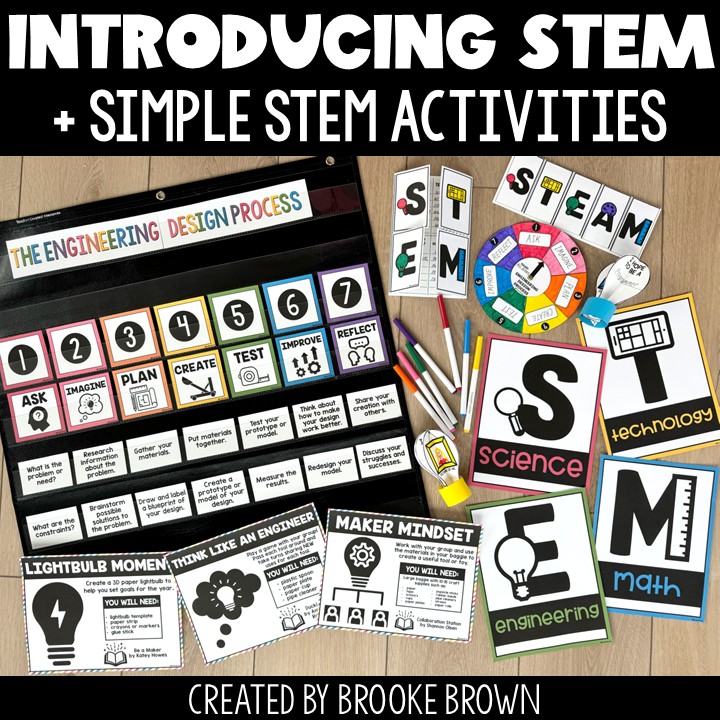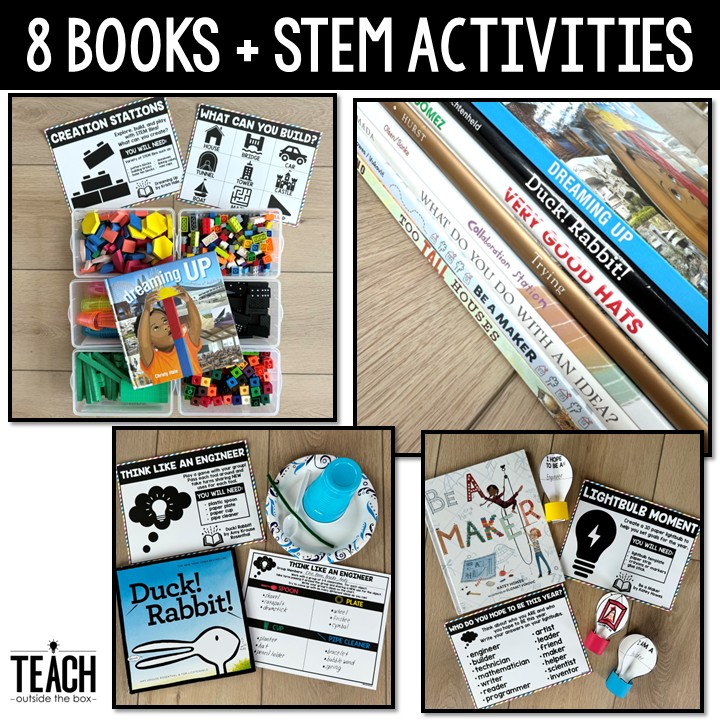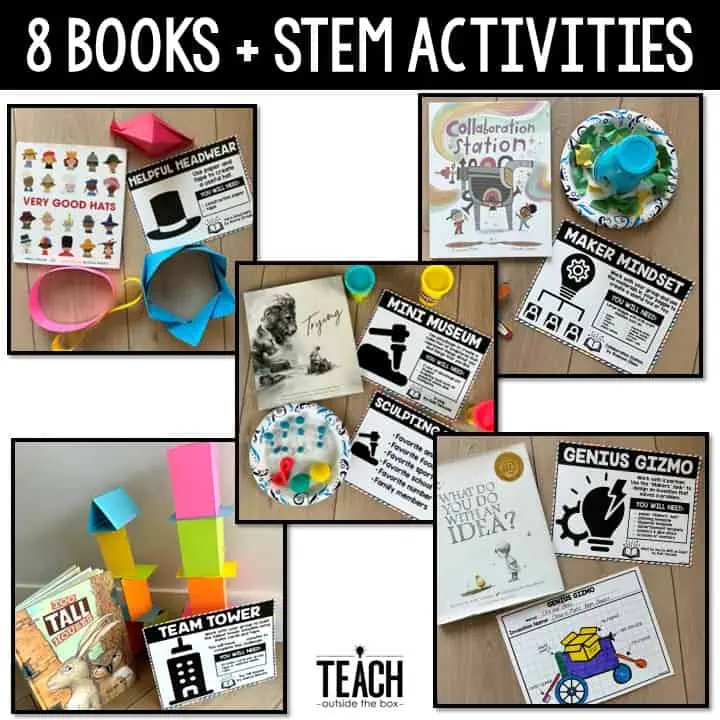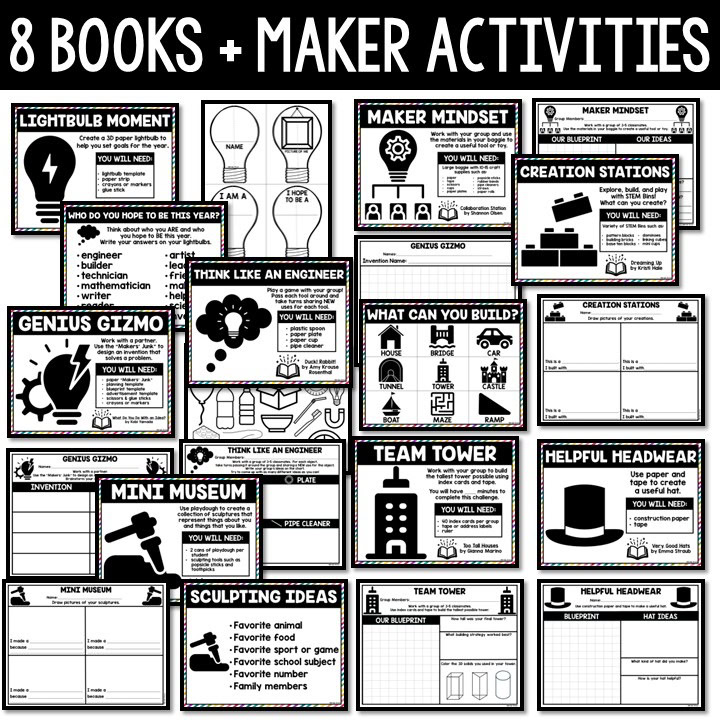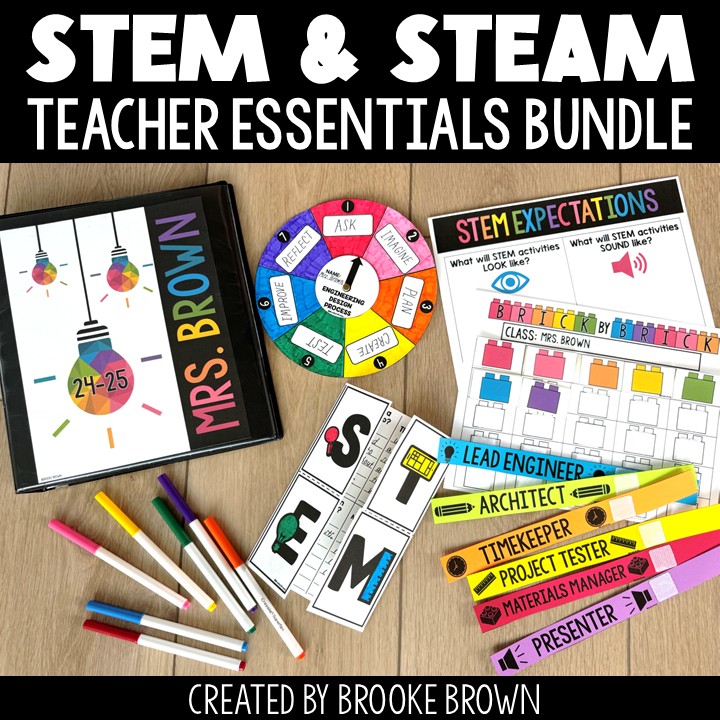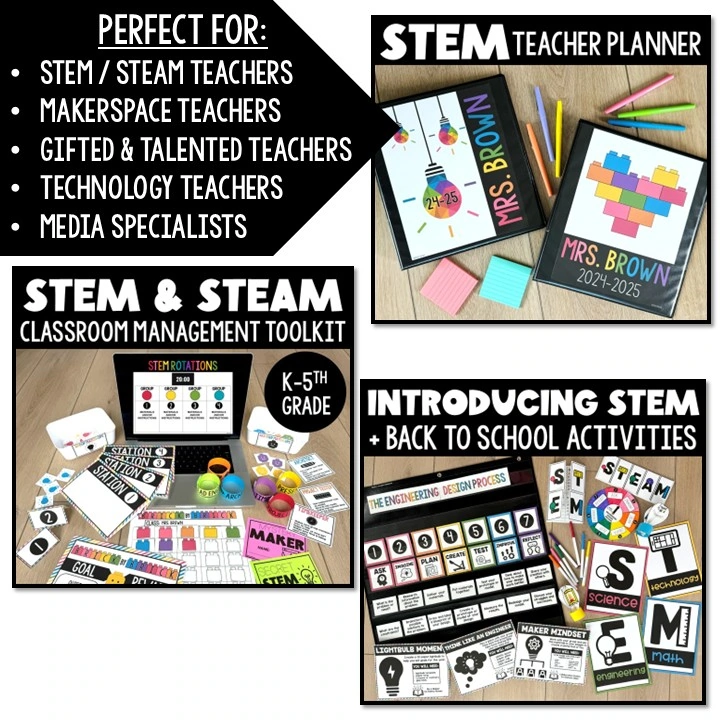Simple STEM Activities and Read Alouds
Looking for simple, low prep STEM activities to pair with engaging read alouds for Back to School and beyond?! You’ve come to the right place!
As a Gifted and Talented teacher, I frequently use picture books to inspire my students’ STEM projects and creations. Many of the following STEM activities are ideal for Back to School, but they can also be incorporated any time of year and are appropriate for all ages of students. Lessons are designed to encourage students to think like inventors, promoting collaboration, critical thinking, and creative, “outside the box” thinking. STEM activities can be complete independently, with partners, or with a small group.
Be a Maker
Be a Maker by Katey Howes is one of my favorite books to share with my students for Back to School. It’s the perfect read aloud to set the stage for a STEM classroom or Makerspace and inspire all of our little makers, from engineers to artists, to chefs and musicians and more! This book has beautifully diverse illustrations and shares an inspiring message about the power of all different kinds of makers coming together to make our world a better place.
Lightbulb Moment
For this activity, students will create their own 3D paper lightbulbs to help them set goals for the school year! Similar to the characters in the book, they will decide what type of “Maker” they currently are and what type of maker they HOPE to be this school year. My students always LOVE this project and we display these lightbulbs on top of our cabinets all year long!
Duck! Rabbit!
Duck! Rabbit! by Amy Krouse Rosenthal and Tom Lichtenheld is a fun and silly read aloud to encourage students’ to consider and discuss multiple perspectives, and always leads to lots of giggles too! It features two characters who playfully argue back and forth about an optical illusion of seeing a duck or a rabbit in the same image, depending on certain surroundings or points of view. It makes a great introduction for any divergent thinking activity, helping your students explore and appreciate multiple perspectives.
Think Like an Engineer
For this activity, students will play a group game to explore multiple solutions to problems and “think like engineers!” Each group of 3-5 students will need a spoon, plate, cup, and pipe cleaner. Group members will take turns passing each object around the group and sharing a new and innovative use for the object. For example, a pipe cleaner could be a bubble wand, and a plate could be a frisbee! Students will write their ideas on their group chart and come up with as many ideas as they can. This also makes a great Morning Meeting game, and it’s a wonderful way to get your students to appreciate the extraordinary qualities in ordinary objects…..seeing things not only as what they are but as what they could be!
Trying
Trying by Kobi Yamada is a beautiful story with a focus on failure as a natural and essential part of the learning process. (Also, check out Maybe and Noticing for similar inspiring messages and stunning illustrations in this series.) The main character features a boy following the path of a master sculptor, experiencing setbacks and struggles along his journey to becoming a sculptor himself. My favorite quote that tugged at my teacher heart the most was,
“When we make it safe to fail, we make it safe to succeed.”
-Kobi Yamada
What better message to exemplify the engineering design process for our students and help them see failure and improvement as a stepping stone in their learning experience instead of setback?! This read aloud is a must for your STEM library!
Mini Museum
This low prep activity is a creative hands-on twist on an “All About Me” activity for Back to School, but it’s a hit any time of year! All students will need is 1-2 cans of playdough and a variety of simple sculpting tools such as toothpicks and craft sticks to create their Mini Museum. They will create mini sculptures that represent things to describe them and their interests. For example, students might sculpt their favorite foods, animals, sports, or hobbies. Students can then “tour” each other’s mini museums around the classroom to learn more about their classmates!
Too Tall Houses
Too Tall Houses by Gianna Marino is the classic story of two animal neighbors, Owl and Rabbit, who realize the values of compromise, collaboration, and empathy after a fierce competitive battle to build two taller houses leads to disaster. In the end, they choose cooperation and friendship and have “all they need to build one small house.” This read aloud has a heartfelt message and common theme that even my youngest students love and appreciate!
Team Tower
Index cards and tape or address labels are all your students will need for this partner or small group challenge! Add a time limit to make it extra competitive, and have your students create the tallest possible tower out of only cards and tape. This STEM activity has natural applications to 3D solids and structures, so it’s perfect to tie into your math instruction.
Collaboration Station
Collaboration Station is a fabulous new book written by my friend and former educator, Shannon Olson. Although collaboration is often my favorite aspect of the Engineering Design Process, it can often be challenging to teach my students the essential skills (or “People Smarts”) that are needed to successfully work with groups and partners during STEM activities. This book highlights common pain points that often arise during collaborative work such as power struggles and lack of group roles, especially at the beginning of the school year. The author shares many sensible strategies for collaboration that can easily be applied to STEM challenges for a variety of ages. This read aloud is perfect to share during back school to establish routines and expectations before your students dive in to their first STEM activity with partners or small groups.
Maker Mindset
What better way to have your students practice collaborative learning and get into a “Maker Mindset” than to collaborate with their classmates?! For this activity, prepare a large baggie of craft materials and supplies for each group of 3-4 students with paper plates, cups, paper, popsicle sticks, pipe cleaners, scissors, etc. Each group will work together and use the materials in the baggie to create one or more useful tools or toys. This a low prep, simple way to get students thinking outside the box, sharing ideas, and listening to their classmates’ ideas and perspectives. See the photo below for examples of possible inventions.
Very Good Hats
Very Good Hats is a darling book by Emma Straub that always delights my students, begging the question, what exactly makes a hat, a hat? Your kids will love the illustrations in this book and all the creative examples of hats. For example, acorns and raspberries could be snug hats for your fingers, and an empty pudding cup makes a good hat for a stuffed bear. After this read aloud, you can invite discussions from students to think of objects around the classroom or in nature that might be considered “hats.”
Helpful Headwear
For this simple STEM activity, students will use paper and tape to create a useful hat! The sky is the limit with creative options as they can work independently or with partners, and you may choose to have students choose a particular season or theme for their hats. Students can also brainstorm a potential problem that their hat might solve.
What Do You Do With an Idea?
As you can tell, Kobi Yamada is a favorite author of mine! What Do You Do With an Idea? is one of the first read alouds that I ever added to my STEM library, and it’s one that I revisit year after year with my students. So simple, yet so captivating, this read aloud convinces readers that even the smallest ideas can end up changing the world. There are so many things in our world that could be made better, and the little minds and hearts in our classrooms need to realize that the future is in their hands. Change starts with IDEAS and those ideas turn into ACTIONS. What better time to have them start imagining solutions for a better world than inside the walls of our classrooms?
Genius Gizmo
Have your students brainstorm a list of common problems that they encounter at home, at school, or that they observe in our world, and a list of potential inventions that might solve those problems. Then, have them use paper “Makers’ Junk” to design a “Genius Gizmo” invention to solve that problem. They can also create an advertisement for their invention!
Dreaming Up
In Dreaming Up: A Celebration of Building, Christy Hale draws beautiful parallels between everyday constructive play and real-world, extraordinary examples of architecture featuring diverse children from around the world. From sand to cups, to cards and LEGO, to blocks and sticks, kids can make endless connections to building materials that they use and love every day. The introduction of this book reads, “If they can dream it, they can build it.” This book speaks to my heart and passion from the very beginning, emphasizing the power and potentials of creative play and it’s connections to our world.
Creation Stations
Create, build, and play with STEM Bins®! Let your students explore a variety of building materials at STEM Bins stations and engineer models of real world structures using the items in the bins. They can also create their own designs and inventions. To read more about the limitless possibilities of STEM Bins, check out the blog post below:
Looking for all of these simple STEM activities in one resource?! Check out my full pack of all 8 Back to School STEM Activities + Read Alouds and Introducing STEM lessons!
Also, make sure to check out my comprehensive BUNDLE of STEM Teacher Essentials with Back to School STEM Activities, STEM Teacher Planner, and Classroom Management Toolkit!
If these exciting STEM activities captivated your students, keep the momentum going! Check out “Introducing STEM and the Engineering Design Process to Elementary Students” to help them dive deeper into the magical world of STEM!
This post contains affiliate links. By purchasing items using these affiliate links, I will receive a small commission on your purchase.


